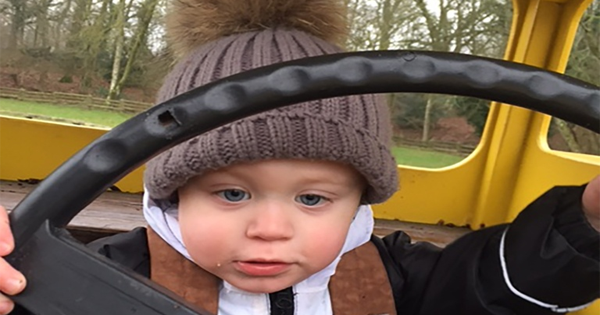In March 2015, Sophie Murray gave birth to her son Finley. The entire family was thrilled to welcome Finley into the world – but not before Sophie’s sister noticed something odd about Finley’s head. His skull was triangular.
It didn’t take long for the entire family to notice this. The problem only got more prominent the older Finley became. “As Finley got bigger and bigger his head got more and more triangular,” Murray stressed. “He had a ridge that stuck out running down his forehead and a permanent vein down his nose that looked like a bruise."
On top of this physical deformity, Finley also suffered constantly from viral infections. Almost every single day, the pain of his infections was so great that he “would be clutching his head and screaming from the pain.”
Murray was desperate to find a doctor who could help her son.
Every single time she brought her son to the doctor, however, they would just get brushed off and ignored. No one would listen to Murray, or they simply said that Finley’s head wasn’t a problem that would last and be of any concern.
After some time, Murray had had enough. She took photos of Finley’s head and sent them off to four different specialist centers.
Almost immediately, all four of these contacts replied, telling her that Finley’s condition was incredibly serious and he needed to see a doctor as soon as possible.
Murray was overwhelmed, but responded as best she could. While she’d known something was wrong with her son, she hadn’t expected the response to be this immediate nor this demanding.
Within the hour, she’d had Finley booked for an appointment with a surgeon, had a CT scan lined up for the following week, and then the actual operation a week after that.
After the appointment, Murray finally got the answer she’d been searching for ever since the beginning. Finley had metopic synostosis, a medical condition where the fusing of an infant’s skulls occurs to soon during their growth.
An infant’s skull isn’t actually just one piece of bone quite yet. A baby’s skull is made up of several different pieces of bone, all of which slowly form into one piece when sutures develop.
Babies with metopic synostosis have sutures that develop too quickly. This causes a prominent ridge to form in the baby’s forehead over time.
As time passes and the baby continues to grow, their skull remains fused. The brain, which is obviously still growing, has nowhere to expand, thereby putting pressure on the brain and within the baby’s head over time.
For Finley, the ridge in his skull had begun squeezing his brain.
Doctors generally say that babies with metopic synostosis can survive the pressure building up in their skulls for about 18 months before permanent brain damage is caused.
By the time Murray had gotten her son Finley to the surgeon, he was already 17 months old. If the surgery had been delayed by just a matter of weeks, his life would have changed drastically, for good.
Already, Murray had noticed that her son wasn’t hitting all the developmental milestones he should have been reaching. He didn’t crawl until he was one year old and before surgery, he couldn’t speak at all.
During the operation, surgeons “cut [Finley’s] head open from ear-to-ear, and the surgeon said when they opened up his skull, Finley’s brain was bulging at the top from where it had been so squashed,” Murray explained.
“They cut off bits of his skull and put them back together like a jigsaw. All his face bones had to be pushed forward."

Now, although Finley still has a long recovery process ahead of him, he’s already learned how to say “mama” and “pear.”
Murray is immensely grateful to the surgical team – as well as all the other specialists who responded to her sent photos – for saving her son’s life. “Without the surgery, Finley would have had serious development issues, he would have had facial deformities, he would have been bullied at school. That is the opposite of what you want for your child,” she said.
Finley has been recovering well and is making huge progress in his development. “I'm so proud of him,” Murray said.





